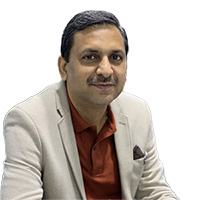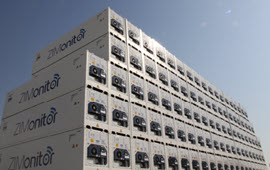Booming Seafood Market – India’s Outlook
With more than 1.3 billion people, India is the second most populated country in the world and seventh by land area. The country has a long and diverse coastline, as well as a rich river environment, which represent excellent locations for aquaculture.
Today, backed by several incentive schemes promoted by the government, seafood represents 10% of India’s total exports, and nearly 20% of all its agricultural exports. More specifically, India is the single largest producer of farmed shrimp in the world, accounting for almost 6% of global seafood production. In the east coast of India, shrimp farming is growing to maintain year-round supplies and meet global demand.
In 2019, India’s export of seafood reached $6.7 billion, primarily to three markets – the United States, China/South-East Asia, and Japan. With a year-over-year growth of 8%-10% (and despite the current COVID-19 pandemic), India is a global player in the seafood market that is consistently growing its share, expanding also to EU countries like Spain, Portugal and Italy.
But this sensational growth is not without its challenges.
The seasonal seafood catch (especially fish) starts in the middle of February and ends around mid-June (before monsoon season) to maintain sufficient stocks to meet global demand. These stocks are properly stored for optimum preservation. Sometimes, processing and packaging delays lead to situations in which demand and supply are almost at the same level, forcing exporters to make all possible efforts to supply on a real-time basis.
Once this high-value product is ready to be moved, maintaining its freshness during transportation is paramount. When seafood makes it to the port of departure (in India these are primarily Kochi, Mumbai and Pipavav, Vishakhapatnam, Paradip, and Kolkotta), transportation in reefers is a must to ensure that this high-value cargo reaches its destination as fresh as when it was caught.
ZIM puts at the disposal of Indian seafood farmers a fleet of modern reefers. With precise control of concentrations of O2, CO2, temperature and humidity, seafood quality and freshness are maintained at the highest standards.
In view of the constant growth of this important export market in India, one of our biggest challenges is to make sure that we have sufficient reefers, with the best technology, to supply to growers whenever and wherever they need. Out people on the ground spare no efforts to plan ahead of each season, be proactive, and provide help 24/7 to meet market demand and customer expectations in service delivery.
What does the future hold?
The future couldn’t be brighter for both India’s seafood exports and for ZIM India.
At the country level, India’s government is promoting more farming and targeting new markets in the EU, with a declared forecast of 10% growth year over year on average.
ZIM India is also looking at new markets for seafood exports, including Africa, Canada, and other EU countries. In fact, ZIM’s management has established a target of 10%-15% growth in the next few years, which will be complemented by entering into the new market in the east coast of India in the state of Orissa).
These amazing efforts in the reefers-for-seafood market are backed by a dedicated Indian team that is in constant contact with our customers to align their needs, expectations, and requirements with our company’s strategy. We are very proud of this commitment, and our customers in turn demonstrate their loyalty by expanding their business with ZIM.






